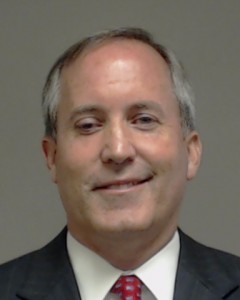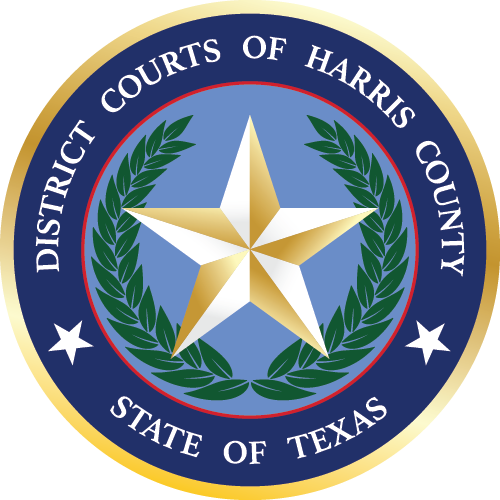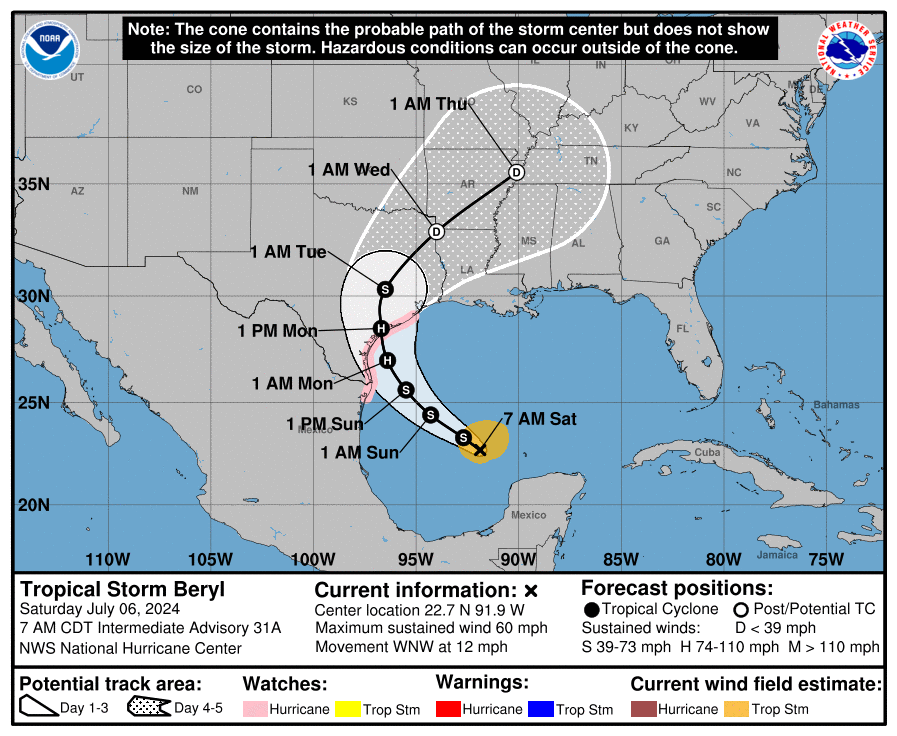This is a (usually) weekly feature produced by my friend Ginger. Let us know what you think.
The last few weeks, in news from Dallas-Fort Worth, we have a grab bag of catch-up items from elections to storms and their chasers; a lot of unpleasant people with big money putting in the hands of other unpleasant people; roundups of schools and environmental issues; Saks buys Neiman Marcus; where the high-speed rail is going around downtown Dallas; the Boomstick Glizzy; the State Fair semifinalist dishes; and more.
This week’s post was brought to you by Apple’s New Wave Essentials playlist, because I wanted to work with something familiar and beloved on. I didn’t finish the almost seven hour playlist while writing, but I was glad I had enough music to keep me company the whole way.
And now, the news, and what passes for news:
- Let’s start with the last election results from the spring: a summary of the June runoffs following the May elections. And now we’re lining up for November.
- As you may have seen in the Texas Tribune last month, the True Texas Project, a bunch of Christian nationalists, are holding their fifteenth anniversary celebration at the Fort Worth Botanic Garden. After the identity of the group was exposed and speakers started dropping off the agenda, the city is forcing the Botanic Garden to host to avoid a lawsuit. As we approach the anniversary, activists are planning to protest the event. I expect we’ll wrap this up next week, hopefully with no violence.
- You’ve probably also read about the racist attack on a Palestinian family in Euless back in May, which received national coverage and presidential mention. The latest update is that the attacker’s bond is set at $1 million and Tarrant County is investigating the attack as a hate crime.
- The Dallas Observer has a piece on how the city is faring in recovery from the Memorial Day storms. Best wishes to my Houston pals as y’all go through the same process after Beryl.
- Sort of related: an article about one of the treasures of the Metroplex, Texas Storm Chasers. They’re the first folks I turn to when weather gets really bad here. I have their app and follow their Facebook, which is where I found out they’d been kicked off of TikTok. Apparently when people broadcast live from inside the car during a storm, it violates some sort of unsafe driving rule, even if the person pointing the camera is riding shotgun.
- You may remember that back in May, Dallas hosted the NRA’s national convention. Here’s a substack piece on the writer’s experience at the convention. It’s both interesting and upsetting. Blast from the past: apparently John Lott’s people had a booth at the convention!
- Our host has been keeping you up to date on the hijinks around the high-speed rail that Dallas doesn’t want going through downtown. This week’s story is the newest iteration of the line loops around downtown. Not at all coincidentally, the renovation and expansion of the city’s convention center, which will cost $3.7 billion, is now underway. The new route will move the rail, which clips the current center’s footprint, toward I-35.
- One of the biggest items of local financial news in the last month has been the sale of local fashion titan Neiman Marcus to the folks who own Saks Fifth Avenue. This is a sale despite the way the local media refers to it as a merger; the purchase price is $2.65 billion. The Saks people are in charge, and, even scarier, Amazon is an investor.
- Two jailers involved in the death of Anthony Johnson, one of the half-dozen or so people who have died in the Tarrant County jail since the start of the year, have been charged with murder, booked, and released on $125,000 bond each. The jailers were also fired a second time, this time in accordance with civil service procedures. I’d like to point you at the Star-Telegram’s editioral advocating a release of all the jail footage of Johnson’s death. I hope this case, which seems to be staying in the public eye, drives a larger investigation of the jail and inmate deaths.
- Stop me if you’ve heard this one before: Dallas’ suburbs want to cap their revenue share with DART at a considerably lower level than they’re currently paying, cutting about 25% of their contributions. As this DMN editorial notes, that follows the Dallas City Council considering raiding DART to cover the city’s pension obligations. The DMN is right, though: we need public transit and we have to pay for it.
- Related: here’s an op-ed from the head of the retired police union in Dallas reminding us we do need to pay the pensions of the people who served the city.
- And speaking of government entities who are out of money: Dallas County is facing a $40.6 million deficit in 2024, mostly because of Sherriff Department overtime.
- Supposedly not contributing to the Dallas County deficit this year is our juvenile detention center. They have other problems: community leaders are protesting living conditions inside the center including overflowing toilets. I have to admit I’m so used to hearing complaints about the county’s juvenile system that I glossed over the headline on this story. I was horrified to read what the county is doing to kids in juvie, including 23 hours a day on lockdown, which is illegal. There is a law, and we’re going to have to make them obey it. And we’re going to have to pay for it.
- The Star-Telegram has a news analysis piece on what happens if abortion regulations in Texas get tighter and it’s not a pretty picture. One of the possibilities that anti-abortion reactionaries are pushing is subjecting people who terminate pregnancies to capital murder prosecution.
- Related, sort of: Vice President Kamala Harris was in town this week for the Alpha Kappa Alpha sorority’s national convention. She used the trip to announce a new federal initiative to cut maternal mortality rates. This is something we really need in Texas. Childbirth is killing Texans in droves and has been since before the Republicans banned abortion.
- Awkwardly related to the sorority convention: One of the hotels here in Dallas was hosting both sorority sisters and a gay daddy convention. The hotel booted the daddies, claiming that other visitors complained about public nudity. The real cause of complaint could be that, could be a “boom boom room”, could be drugs. In any case it’s not a good look and blaming it on the sorority sisters is also not great.
- Time for an update on those DFW suburban school districts we love to … well, watch from a safe distance in most of y’all’s case:
- Southlake Carroll is in court again: they just won the first round in their suit against the feds over Title IX protections. Meanwhile the district is also wrangling with the Department of Education over a civil rights violation letter where they claim they haven’t received the letter. Notice from this article that the Alliance Defending Freedom is arguing on the District’s behalf in the lawsuit mentioned above.
- Northwest ISD’s 2024-2025 budget is $15.8 million in deficit.
- Making Northwest ISD look good, Arlington ISD has a $25.5 million deficit for 2024-2025.
- Meanwhile Keller ISD managed to balance its budget without layoffs by, among other means, not offering raises to teachers.
- Related: in rural school districts, unlicensed teachers make up almost three quarters of new hires.
- Princeton ISD canceled its Pride event even after the ACLU complained.
- And Mansfield ISD will tell parents if their kid is trans.
- The family of the late congresswoman Eddie Bernice Johnson has resolved their claims against Baylor Scott & White over her treatment and death. While the settlement is confidential, the money will go to the new Eddie Bernice Johnson Lives Foundation.
- You have to be a creeper to get the State Commission on Judicial Conduct to publicly reprimand you for sexual harassment. Tarrant County Judge Jesus Nevarez got that reprimand and, for all the good it will do, is going to have to take four hours of education including two on sexual harassment.
- The Dallas Observer fact-checks a Colin Allred commercial. Unsurprisingly, Allred is playing fast-and-loose with facts, but not outright lying.
- Another roundup, this time on environmental issues:
- Here’s an article in Time on the noise folks in Granbury are putting up with from bitcoin miners. The Time piece mentions some noise citations; the operators were found not guilty this week. And just in case the way they’re ruining the areas where the “mines” are built isn’t enough for you, the bitcoin miners may crash our rickety power grid.
- You may remember GAF, the west Dallas shingle factory that local activists want to force out of the area. They’re considered the likely culprit in a Texas A&M-fronted study that shows almost three times as many folks in west Dallas have asthma compared to the statewide rate. Also the air quality in west Dallas is worse than in Joppa, the freedmen’s town in south Dallas that’s been a byword for pollution for decades.
- The Texas Observer has from the Sunrise Movement, an environmental group in Arlington that’s fighting fracking in the city. They’re currently fighting a new well permit for French energy company Total. All of this is in the shadow of the 2015 law that bans cities from banning or regulating fracking, and we all know we’re not going to get rid of that until we get rid of the Republicans in Austin.
- I’m pointing out this this “Reality Check” from the Star-Telegram about ERCOT because it demonstrates the way that media in Texas buys everything the petroleum industry and its bought and paid for academics are selling.
- This summer the city of Dallas is doing another urban heat island study. Last year, the study mapped about 100 square miles; this year they’re planning to map 245.
- Not directly related, but relevant to the environment are these two articles about folks working in the heat. First, the widow of Eugene Gates, the postal carrier who died of heat-related illness last summer, says the USPS isn’t doing enough to protect carriers. I’d be perfectly happy to get my mail at home at night during the summer if it kept postal workers from getting sick, personally. And second, the construction industry is pushing back against proposed OSHA rules to protect their workers. Remember that here in Dallas we used to have water breaks for construction workers by city ordinance, but as this article reminds us, the Death Star bill killed those protections.
- In the finale of the T.C. Broadnax saga, the city paid him his due, to the tune of $467,000. Related: the DMN tells us who the highest-paid city workers were in 2022 and 2023.
- Last month we saw that almost a quarter of Fort Worth homes were owned by commercial interests. The Fort Worth Report did some digging and figured out that the majority of those commercially owned homes belong to mom-and-pop landlords. In June, meanwhile, for those folks who live in the homes they own, the Tarrant County homestead exemption increased to the state maximum of 20%.
- You may remember there was a brouhaha in April about the Tarrant County courts administrator when County Judge O’Hare wanted to defund the position. O’Hare got what he wanted last month, as Gary Shugart stepped down.
- I’m sure you’ll all be surprised to hear that casino magnate and new Dallas Mavericks owner Miriam Adelson is giving big money to Ted Cruz.
- While we’re looking into who’s paying for our esteemed political opponents, here’s a Texas Monthly investigation into who really paid Jonathan Mitchell, of SB8 infamy, for his work representing Right to Life of East Texas.
- And the Texas Ethics Commission voted unanimously to require social media influencers to disclose when they’re paid for political advertisements. Note some of the names involved in the Paxton defense campaign that inspired this regulation: Defend Texas Liberty and Trump favorite Brad Parscale. Also notice our old friends Wilks and Dunn being mad about it, which means we’re moving in the right direction. Seriously, though, if I can expect an Instagram account to tell me if they’re being paid to show off jeans, I ought to be able to expect the same for their politics.
- I keep an eye out for news outlets that might shed light on different aspects of the Metroplex, but I’m going to be avoiding Hoodline, which is using AI to write its articles but giving them bylines as if they were written by people. No thanks.
- I thought this was the Onion at first but unfortunately it’s real: a Dallas area company is putting vending machines that sell bullets in grocery stores in Alabama, Oklahoma and Texas.
- A juvenile, presumably a teenager, in Smith County is suspected of making more than 100 calls for bomb threats and swatting across several states. Yikes.
- You may have heard there’s a big Dallas Cowboys Cheerleader documentary on Netflix. The $64 question is how much do they make? Apparently the answer is “I would say I’m making…like a Chick-fil-A worker who works full time.”.
- A couple of Dallas athletes are going to the Olympics and as you can imagine, local media are all over them. First is Sha’Carri Richardson, who is joining the track team, and is apparently also the subject of a Netflix documentary. The second is teen gymnast Hezly Rivera, who will join the squad led by Simone Biles. Congratulations to both of them!
- In some good arts news, the DMA is putting more Caddo pottery on display for the first time since the 2022 break-in where a monumental piece was destroyed. Caddo artist Chase Kahwinhut Earles, who created the gar that was broken two years ago, has made three new pieces for the DMA and incorporated pieces of the destroyed work. I’m looking forward to seeing it the next time I’m at the DMA.
- Somebody almost donated a painting by Texas Impressionist Julian Onderdonk to Goodwill but they figured it out in time. Instead it was sold at auction for $112,500.
- Posted without comment: Texas Rangers’ Boomstick Glizzy Ranked Longest Wiener in MLB. Behold. OK: I do have a comment, which is click through and look at it. That is one big hot dog.
- It’s summer, which means it’s time to start talking about State Fair food again. Pick your poison from the list of semifinalists, which you can check out at Eater Dallas or the Dallas Observer. The crookies and the cookie butter nachos sound delicious, and the Hammy Pimento Meltdown is on my list, but I’m dubious about the LAY’S Potato Chip Drink.















